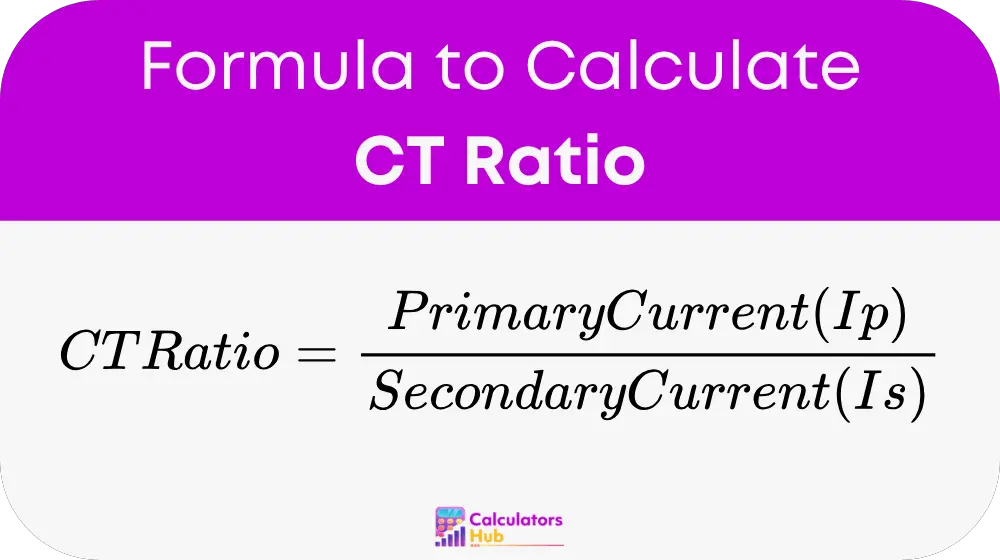A CT Ratio Calculator helps engineers, electricians, and power system operators determine the current transformer (CT) ratio. Current transformers are widely used in power distribution, metering, and protective relays to measure high currents safely by stepping them down to manageable levels.
The CT ratio represents the proportion between the primary current (high voltage side) and the secondary current (low voltage side) of a current transformer. It is essential for ensuring accurate current measurement, system protection, and energy monitoring in electrical grids.
By using a CT Ratio Calculator, professionals can verify transformer specifications, ensure precise metering, and optimize electrical system performance.
Formula of CT Ratio Calculator
The Current Transformer (CT) ratio is calculated using the following equation:

Where:
- Primary Current (Ip) is the current flowing through the primary winding of the transformer.
- Secondary Current (Is) is the current output from the secondary winding, which is measured or used for metering and protection.
This ratio helps determine the scaling factor for converting high-voltage currents into a safer, measurable form.
Pre-Calculated CT Ratio Table
For quick reference, here is a table showing common CT ratios used in electrical applications:
| Primary Current (A) | Secondary Current (A) | CT Ratio |
|---|---|---|
| 1000 | 5 | 200:1 |
| 800 | 5 | 160:1 |
| 600 | 5 | 120:1 |
| 400 | 5 | 80:1 |
| 200 | 5 | 40:1 |
This table helps engineers quickly select or verify CT ratios without performing manual calculations.
Example of CT Ratio Calculator
Let’s calculate the CT ratio for a system where:
- Primary current (Ip) = 800 A
- Secondary current (Is) = 5 A
Applying the formula:
CT Ratio = 800 / 5
CT Ratio = 160:1
This means the current transformer steps down the primary current of 800 A to a safer 5 A, which can be used for metering or protection devices.
Most Common FAQs
The CT ratio ensures accurate current measurement, metering, and protective relay operation, preventing overloading and incorrect readings in electrical systems.
Select a CT ratio based on the primary current of the system and the required secondary current (usually 5 A or 1 A for standard meters and relays).
Yes, an incorrect CT ratio can lead to misreadings, faulty energy billing, and improper relay settings, affecting the safety and efficiency of an electrical system.